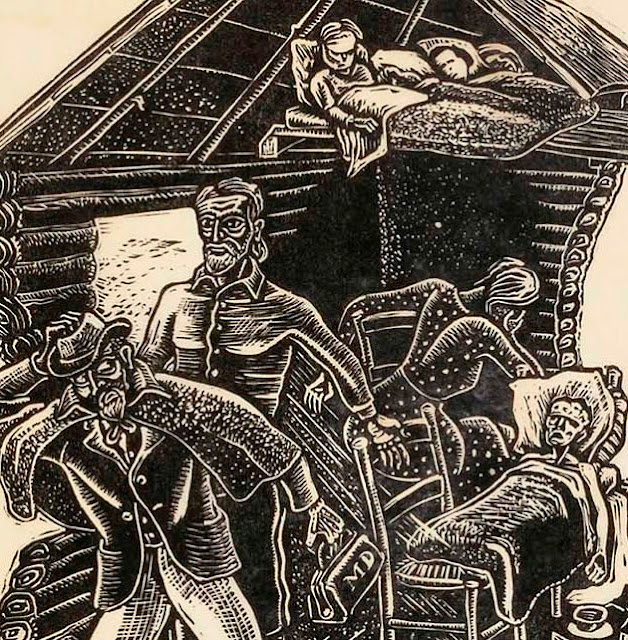Above: "The Plague," a woodcut by Adrian Troy (1901-1977), created while he was in the WPA's art program, ca. 1935-1943. Image courtesy of the Smithsonian American Art Museum.
Above: A closer look at the people in the engraving, highlighting the range of expressions and emotions. The patient is in pain, the mother is grieving, the father is stunned, the doctor seems to be embarrassed or uncomfortable that he can't do more, and the first child in the loft appears to be irritated.
Above: A WPA poster promoting vaccination against Diphtheria. According to the World Health Organization, "Throughout history, Diphtheria has been one of most feared childhood diseases, characterized by devastating outbreaks... Transmission occurs through droplets and close physical contact. Although most infections are asymptomatic or run a relatively mild clinical course, many patients succumb to airway obstruction caused by laryngeal diphtheria or toxic myocarditis... Diphtheria vaccines are based on diphtheria toxoid, a modified bacterial toxin that induces protective antitoxin antibodies..." The CDC informs us that "Diphtheria once was a major cause of illness and death among children. The United States recorded 206,000 cases of diphtheria in 1921, resulting in 15,520 deaths. Starting in the 1920s, diphtheria rates dropped quickly due to the widespread use of vaccines." During the New Deal, "immunizations against diphtheria, typhoid fever, whooping cough, and other infectious diseases were widely administered in schools and clinics," as part of the overall WPA work program (Federal Works Agency, Final Report on the WPA Program, 1935-43, 1946, p. 69).



No comments:
Post a Comment